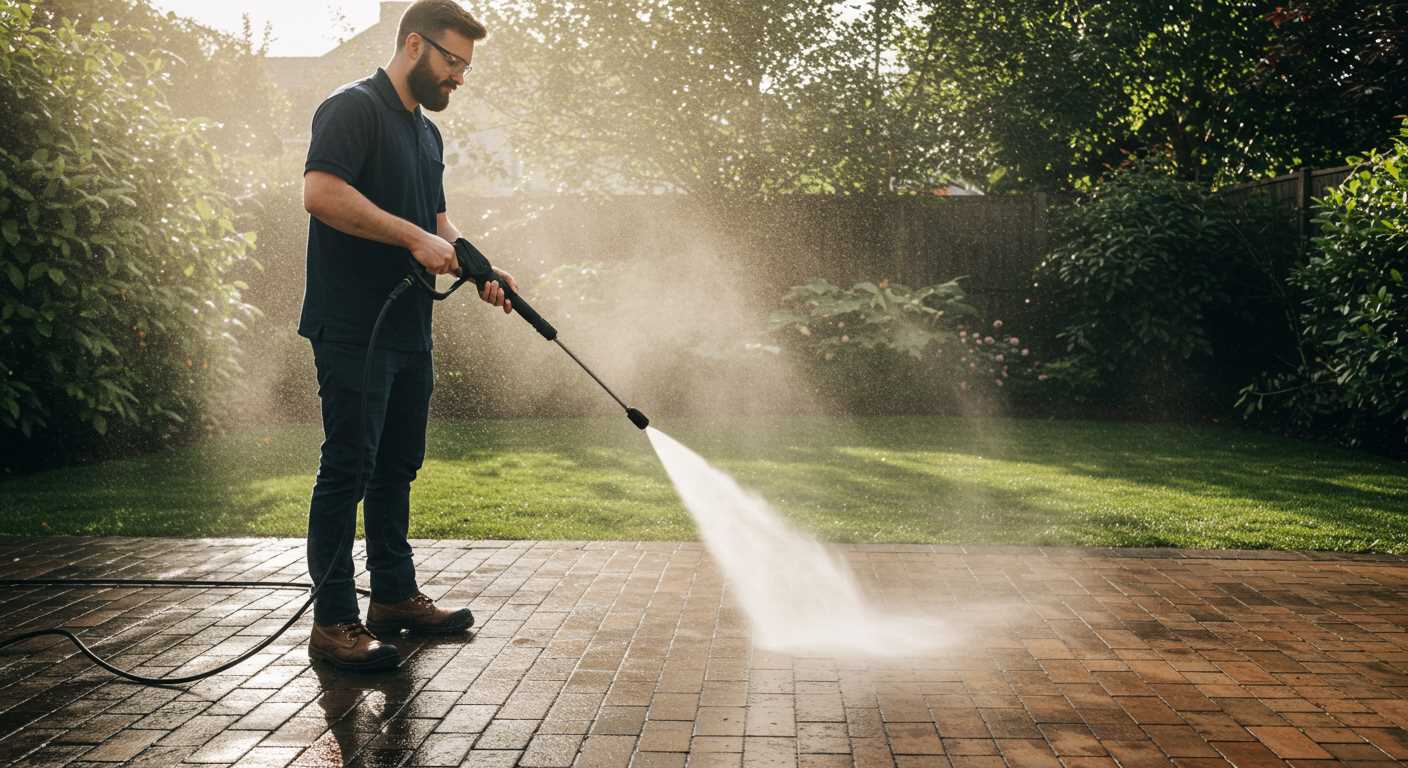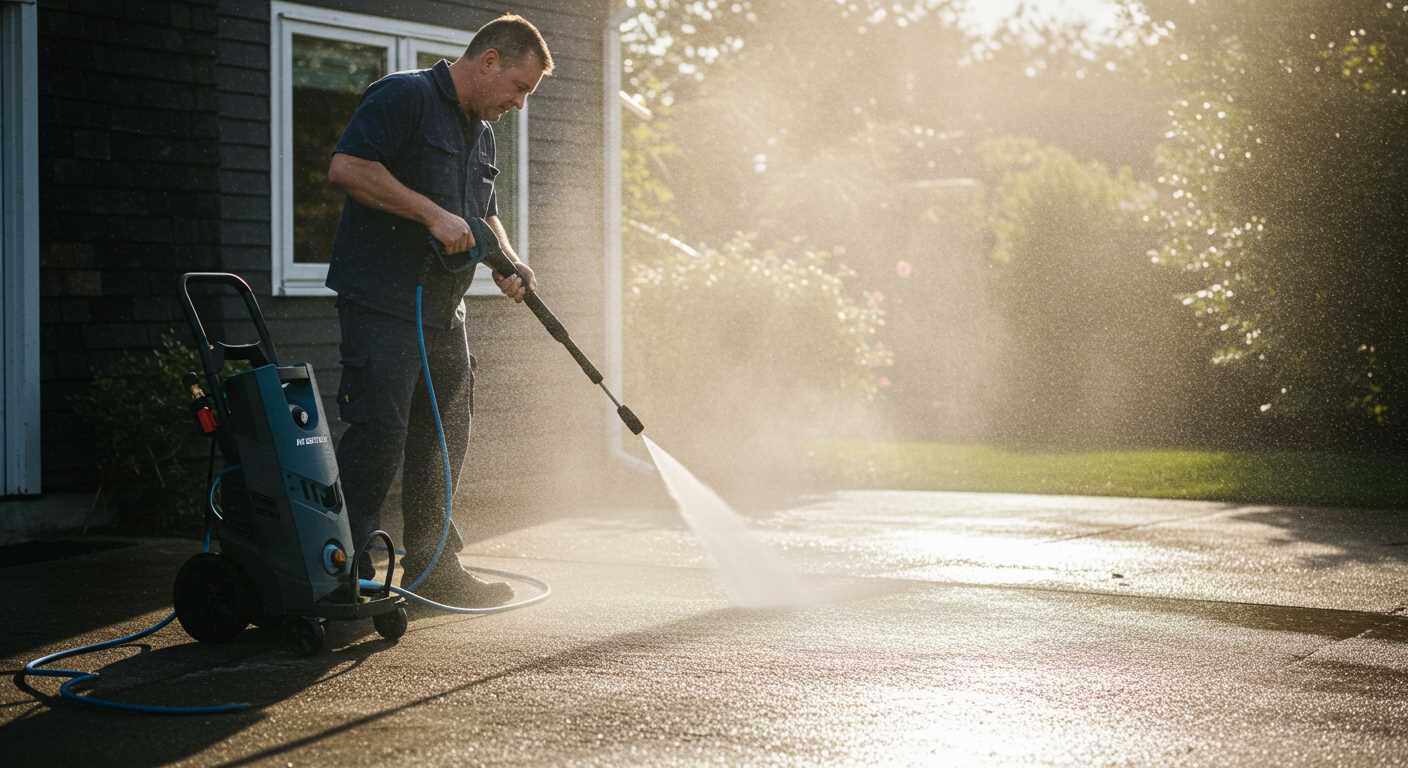


Start with a precise adjustment of the air-fuel mixture screw. Rotate it clockwise until it gently seats, then counterclockwise turn it approximately one and a half turns to establish a baseline setting. This will ensure optimal performance.
Next, pay close attention to the float height. This component regulates the fuel level within the chamber. Measure it carefully; the ideal height is typically around 1 inch from the gasket surface to the float’s uppermost point. Making this adjustment allows for improved fuel supply during operation.
Inspect the jets to confirm they are free from debris. A blocked jet may hinder performance, so utilizing a small wire or compressed air can clean these crucial pathways. It’s essential to keep the fuel system free of contaminants, enhancing overall reliability.
Lastly, after adjustments, don’t skip testing the machine under load. Ensure it runs steadily and does not stall, indicating the adjustments have been successfully implemented for optimal efficiency. Consistent monitoring and fine-tuning will maintain the best performance level in the long term.
Adjusting the Fuel Delivery System on Briggs & Stratton Equipment

Begin the process by ensuring that the engine is off and cool. Disconnect the spark plug wire to prevent accidental starts during adjustments.
Gather the following tools: a flat-head screwdriver, a wrench set, and a clean cloth for maintenance. Confirm the tank is filled with fresh fuel, as stale petrol can lead to performance issues.
- Locate the adjustment screws on the side of the assembly. Typically, there are two: one for idle speed and another for the air-fuel mixture.
- Start with the idle speed screw. Turn it clockwise until it lightly seats, then back it off by about one and a half turns. This provides a base setting.
- Next, adjust the mixture screw. Similar to the previous step, turn it clockwise to seat, then reverse one and a quarter turns.
With the adjustments made, reconnect the spark plug wire. Start the engine and allow it to warm up for a few minutes. Listen for a smooth operation; any irregularities could indicate further tuning is necessary.
While the engine runs, fine-tune both screws incrementally:
- Turn the idle speed screw clockwise or counter-clockwise to achieve a stable idle without stalling.
- Adjust the mixture screw to obtain the best throttle response. A rich mixture may cause rough idling, while a lean mixture could lead to hesitation.
Once the desired performance is reached, secure the screws while ensuring that no tools are left in the area. Remember to check for leaks around the fuel system after adjustments.
Regular maintenance helps avoid issues. Clean the air filter periodically and inspect the fuel lines to ensure they are free from cracks or blockages.
Identifying the Carburetor Settings for Your Model
To determine the correct adjustments for your unit, refer to the model number. This information is typically engraved on the engine’s casing or found on the data plate. Make note of this identifier.
- Consult the owner’s manual specific to your model. It contains detailed specifications, including recommended air-fuel ratios and adjustment guidelines.
- Examine the manufacturer’s website or customer service for downloadable manuals, as they often provide valuable insights.
- Look for a tuning guide, if available, which may include factory settings and performance tips tailored to your machine.
Pay attention to the design differences as they can impact performance. Some units have fixed jets, while others allow for variable air and fuel mixture adjustments.
- Check for any visual markers or indicators around the adjustment screws. Many designs employ a colour system to signify optimal settings.
- Identify the idle and main adjustment screws. These are crucial for regulating performance and ensuring that your machinery operates smoothly.
- Note the typical requirement for counter-clockwise turns to enrich the mixture and clockwise adjustments to lean it out.
Keep a record of all adjustments you make; this will help in troubleshooting if performance issues arise later. Understanding these settings is key for efficient operation and longevity of the equipment.
Gathering Necessary Tools for Carburettor Adjustment

Before adjusting the fuel distribution device, ensure you have the following tools at hand:
Essential Tools
A flat-head screwdriver is crucial for making precise adjustments to the mixture screws. A socket or wrench set will allow you to remove any covers or protective casings. Additionally, a pair of pliers can help with grasping and manipulating small components.
Recommended Supplies
Keep a small container for spills or excess fuel to maintain a clean work area. A fuel stabiliser can be beneficial for keeping the mixture optimal during the adjustment process. Finally, a well-lit workspace will aid visibility, making it easier to inspect parts and ensure accuracy in your adjustments.
Steps to Adjust the Idle Speed Screw
To ensure optimal performance, tweak the idle speed screw. Locate this screw on the side of the engine, usually marked or easily identifiable. Use a screwdriver for fine adjustments.
Adjusting the Screw
Start with the engine running. Slowly turn the screw clockwise until the engine begins to falter, indicating a lean mixture. Then, counterclockwise, turn the screw until the engine runs smoothly at idle. Listen for a consistent sound. The goal is achieving that perfect balance without fluctuation.
Finalising the Adjustment
After achieving smooth operation, perform a quick test at full throttle. Ensure the engine responds promptly. If it does not, return to the idle speed screw and make slight adjustments as necessary. Reassess the performance to guarantee reliability during operation.
Fine-Tuning the Fuel Mixture for Optimal Performance
Adjust the fuel flow with the mixture screw located on the side of the unit. Start by turning the screw clockwise until it gently seats, then back it out by approximately one and a half turns. This initial setting helps establish a balanced starting point.
Observe the engine’s response as you make fine adjustments–turn the mixture screw clockwise for a richer blend and counterclockwise for a leaner mix. If you notice rough idling or excessive smoke, enrich the mixture slightly. Conversely, if the machine sputters or lacks power, lean it out a bit.
Listen to the engine; smooth operation at idle indicates proper settings. For a full throttle test, gradually increase the pressure while monitoring for power loss or unusual sounds. Make minor adjustments while running to hone in on the ideal blend.
After adjustments, allow the washing equipment to operate for a period to confirm stability and performance. Keep an eye on fuel consumption; excessive use may indicate an overly rich mixture. Adjust as necessary to maintain efficiency and prolong the life of the engine.
A clean air filter also plays a critical role in maintaining an optimal mixture. Regularly inspect and replace the filter to ensure a steady airflow, which aids in achieving a perfect balance between fuel and air, resulting in enhanced overall performance.
Cleaning the Carburetor for Better Functionality

Maintaining cleanliness within this component is vital for seamless operation. Begin by disconnecting the fuel supply and removing any external attachments. Ensure you have a clean workspace, preferably with proper ventilation.
Steps for Effective Cleaning
1. Remove the assembly from the equipment, following the manufacturer’s guidelines.
2. Use a suitable cleaning solution, ideally one designed for engine parts. Spray generously, focusing on the jets and passages. A soft brush can help dislodge stubborn deposits.
3. Rinse thoroughly with clean solvent or compressed air to clear away cleaning agents. Ensure no residue remains.
4. Inspect all gaskets and seals for wear. Replace if necessary to prevent leaks.
Final Touches
Reassemble the unit carefully. Check for any loose fittings and tighten them as needed. Once reattached, purge any air from the system before restarting. Regular cleaning intervals will maintain optimal performance.
| Cleaning Step | Tools Needed |
|---|---|
| Disconnect Fuel Supply | Wrench |
| Remove Carburetor Assembly | Screwdriver |
| Apply Cleaning Solution | Spray Cleaner |
| Rinse and Dry | Compressed Air |
| Inspect Gaskets | Visual Inspection |
Troubleshooting Common Issues After Adjustment
If the unit doesn’t start after tweaking, double-check the fuel supply. Ensure the tank is filled with fresh, uncontaminated gasoline. Old or waterlogged fuel can lead to ignition issues. Replace any old fuel to eliminate this as a potential problem.
Inconsistent idling is often a result of improper settings. Revisit the idle speed to confirm it is not too high or low. A nurse adjustable screw should allow for fine-tuning, ensuring smoother operation at lower speeds.
Excessive smoke can indicate a rich fuel mixture. If this occurs, lean out the mixture slightly by adjusting the related screw. Ensure it doesn’t revert to a lean condition, which may cause overheating.
For stumbling or hesitation during operation, inspect the air filter. A dirty filter can restrict airflow, significantly affecting performance. Clean or replace it to restore optimal airflow.
If you notice persistent leaks around the gasket, consider replacing it. A faulty gasket can cause fuel to escape, adversely affecting performance.
For carburettor cleanliness, if problems persist, consider a deeper clean. Disassemble the components and use a carb cleaner to remove deposits. Ensure all passages are clear, which can dramatically improve functionality.
Lastly, if all else fails, consult the manual to verify that the settings match factory specifications specific to the model. Cross-referencing with the manufacturer’s guidelines can often pinpoint overlooked aspects.







